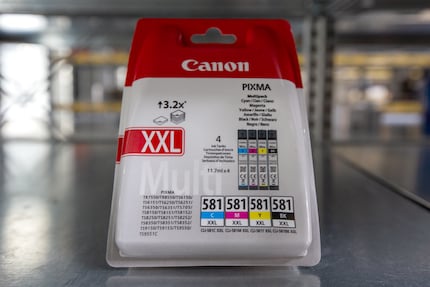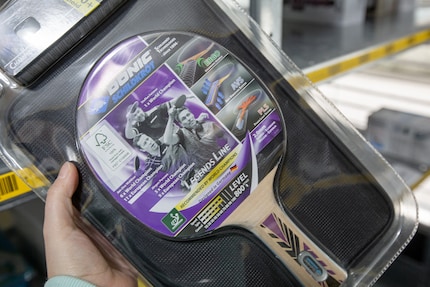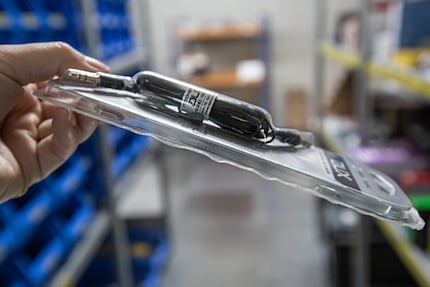
Product test
Happybrush review: the electric toothbrush that gives you a sustainable smile
by Martin Jungfer

Some packages are harder to get open than your average safe. There are plastic sleeves that push even scissors to their limits. Why must we suffer so?
I recently ordered a card reader and new toothbrush heads for my Philips Sonicare. They arrived the next day. As soon as I opened the door and then the cardboard package, I immediately had to roll my eyes. Both the card reader as well as the brush heads were sealed in thick plastic. Such packaging is called a «blister pack», as I would learn later. In my mind’s eye, I could already see the broken pair of scissors and cuts on my hand. I hate this packaging. Who does this? And why is it even necessary?
My colleague David Lee has also made his displeasure known. Further editors soon joined our cause, which is why I’m writing this article. And demanding an answer from both the packaging industry and manufacturers. My first few e-mails and calls were ignored. Then Mr Weber from Tanner & Co. AG, which handles packaging technology, came forward.
«I wish I could answer your question. After all, it interests me as much as you. Take, for example, the Canon CLI-526 multipack. You can’t open these things without getting bloody fingers, broken teeth or open hip fractures.»

No clear answer, but still encouraging. However, I hold no hard feelings towards Tanner & Co. AG from Meisterschwanden: they aren’t involved in packaging design, but in execution and therefore not the right person to contact. But he did request I get back to him as soon as I have an answer.
I will do that, Mr Weber.
A few days later, I did get an answer from Philips. Not to my question, but an answer nonetheless. Seems like they wanted to show off how much the company cares about sustainability. In one sentence, they stated their products were packaged to be well protected, before going on for two paragraphs about recycled materials, CO2 neutrality and renewable energy. At least they assured me that they were working on designing packaging to be protective yet still easy to open in future.
A few days later, I received a call from Tobias Krebs, Senior Product Manager, and Laura Böving, Marketing Director at Assmann Electronics GmbH, which owns the Digitus brand that produces my card reader. Finally, I found out the three reasons that are responsible for creating so-called blister packaging.
People steal things. Whether out of necessity, for the thrill of it or out of youthful recklessness. Anything that’s small and inconspicuous is more likely to be targeted by thieves than anything unwieldy. Blister packaging inflates smaller parts with a lot of plastic, which should protect against a quick snatch and grab. At least that’s how Tobias Krebs, Senior Product Manager, explained it to me. In addition, blister packaging often has a magnetic strip that needs to be removed by cashiers in stationery stores.

Some products, especially electronics, are sensitive to dust, according to Krebs. The thick plastic wrapping acts as protection. If the card reader had lain open on a shelf for two years before I bought it, it would’ve become so dusty that, in the worst case, my memory card itself could suffer. Still, there has to be a middle ground between thick plastic and no packaging at all, which leads me to the third point mentioned.
People want to see what they’re buying. This works with clear plastic, but not with cardboard. «Such packaging is often torn open, thrown back on the shelf and then a closed copy is bought,» says Laura Böving.
Human and product inadequacies are thus responsible for these homicidal blister packs. Or, to be technical, were. This is because almost all of the reasons mentioned above only apply to stationary retail; completely different rules apply to online sales. «Online, products can’t be stolen or touched, and can only be viewed in pictures, so the only argument left is product protection,» says Krebs. However, this could also be guaranteed by cardboard packaging.

Nevertheless, brick-and-mortar retail isn’t dead. So will blister packaging remain on shelves indefinitely? This is where the issue of sustainability comes into play again. Tons of plastic packaging can’t really be justified these days. This also goes for supermarkets and pharmacies. «Cardboard packaging with a sealing adhesive works quite well as a barrier against tearing, printing plenty of pictures on the packaging can replace transparency, and the size of a package can also be adjusted better with cardboard,» says Böving. Only the magnetic strip is a bit harder to fit in, but if you’re determined to steal, you’ll find a way. Crime will never be completely prevented anyway.
But even blister packs will probably never be completely eradicated, at least according to Krebs. For small, sensitive, rather expensive electronic products such as memory cards, there is no alternative, he said. In such cases, even manufacturing costs are justified. «Plastic comes off the roll and is then modelled using the thermoforming process. To do this, plastic is heated and placed over a metal mould specially made for the product while air is extracted. This is done with two halves that are then welded together,» says Krebs.

What can we conclude from all of this? In truth, no one likes blister packaging. For the industry, they’re more expensive and complex to produce than other options, and for the end consumer, they’re incredibly cumbersome to open. In physics, the law of inertia describes the tendency of physical bodies to remain in their state of motion as long as no external forces act on them. Apparently, this also applies to packaging designers.
My life in a nutshell? On a quest to broaden my horizon. I love discovering and learning new skills and I see a chance to experience something new in everything – be it travelling, reading, cooking, movies or DIY.
Interesting facts about products, behind-the-scenes looks at manufacturers and deep-dives on interesting people.
Show all